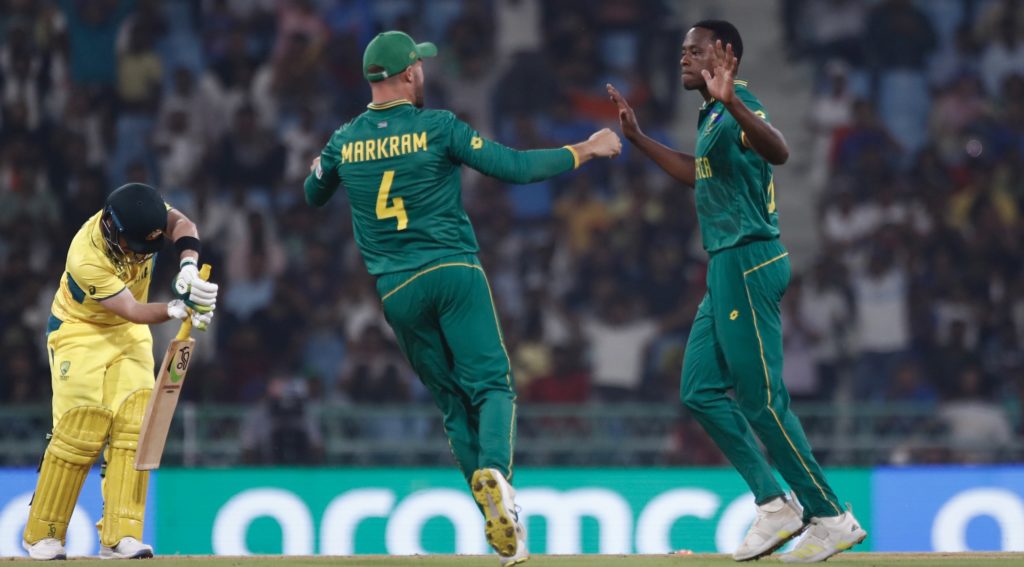The Proteas’ bowling attack awoke from their slumber to deliver a performance that crushed Australia, and alerted the World Cup favourites to their presence, writes RYAN VREDE.
I wrote on Sunday that the Proteas’ World Cup challenge will be built on a batting rebirth. The Proteas’ batters have been outstanding for the bulk of 2023, and look to have all of their tactical and skills bases covered.
However, on Thursday they posted what looked to be a below-par 311 in Lucknow against Australia, who strangled them in overs 40-50. I thought they were 20-30 runs short of a par score, and worried that the Proteas’ seam bowlers couldn’t match the type of skills exhibited by their Australian counterparts.
Indeed, in the calendar year, there had been little evidence to contradict the source of my concern. The Proteas conceded 300 or more five times in 14 innings, and 250 or more three times in that period.
It is fair to say they’ve played the bulk of those pre-World Cup matches on batter-friendly decks. But those at a World Cup in India were always going to be just that. Their batters had excelled, but the Proteas’ bowlers came into the tournament as their obvious weakness.
That makes their showing in the second league match so significant. I’d hoped that the spin duo – Keshav Maharaj and Tabraiz Shamsi – would get through their combined 20 overs at a suffocating economy rate. But I was worried that the seamers would undermine their cause before they got the ball into their hands.
Instead, Marco Jansen and Lungi Ngidi exploited every ounce of movement available to them off the deck and through the air. They choked openers Mitchell Marsh and David Warner until both succumbed to poor strokes. Kagiso Rabada then removed Steve Smith, Josh Ingilis, and Marcus Stoinis in a potent spell, crippling the chase.
Maharaj’s 10 cost just 30, while Shamsi went for 38 in his eight overs. They took four wickets between them, and their value in blunting any hope of a comeback can’t be overstated.
HIGHLIGHTS: Australia vs Proteas (2023 CWC)
Already social media is awash with wounded Proteas fans declaring that the team has peaked too early. I understand this sentiment, given the team’s history at this tournament, but don’t share their pessimism.
The result is significant in the context of their bowling struggles this year. To attribute more significance to it is premature. A fuller measure of this bowling attack will come later in the tournament, when they face England, Pakistan, New Zealand, and an India batting line-up that matches their own potent seven.
The Wankhede Stadium in Mumbai hosts their two fixtures next week, the first of those against one of the tournament favourites, England. Those bowling performances should be watched carefully, given that the first semi-final (contested between the first- and fourth-placed teams) will be hosted at this ground.
Yet the immediate focus is a bowling unit that has shown just how good they can be when they operate close to the ceiling of their potential. Couple that with a batting attack that is running hot, and you’ve got a team that came into the tournament under the radar, but have now alerted the favourites to their threat.
REPORT: Quinny stars as Proteas crush Aussies
Photo: Pankaj Nangia/Gallo Images







